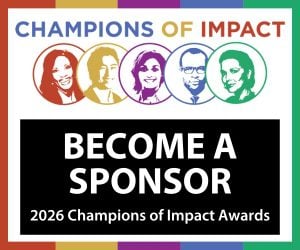Three nights a week, the second floor of Broadway United Methodist Church is flooded with the sounds of orchestra rehearsals, with a diverse group of children ages 5-18 learning to play a string instrument through the Metropolitan Youth Orchestra (MYO), which is sponsored by the Indianapolis Symphony Orchestra. The woman leading the program, Krystle Ford, is a former MYO member.
Ford joined the program as a violinist when she was in the fifth grade, and the skills she learned under the direction of Betty Perry took her to Butler University, where she graduated with a degree in music in 2006. After spending 10 years playing in various ensembles in New York City, Ford, 36, took over the MYO after Perry, who founded the program, retired in 2017.
While Ford can attest to many youth orchestras having diversity amongst the musicians — MYO is about 33% African American and 12% Latinx — she said that a lack of diversity amongst music teachers can be a barrier for many students interested in pursuing music as a career.
“I didn’t see anyone who looked like me as a kid, outside of Betty Perry,” Ford said. “I’ve been gone and came back, and it’s still very slim. It’s hard to find teachers of color [in Indiana]. … If you don’t see others who look like you doing music professionally, it’s harder to make the connection that you can do it and stick with it.”
The diversity amongst students, however, helps kids get a better understanding of race.
“[Diversity] teaches you that the world is different, and it’s made up of a lot of different people,” Ford said. “It paints a more realistic picture of the world, and it helps combat stereotypes. When you have friends of all different races, you can’t say that a certain stereotype is true, because it’s not your experience. … You get to hear different perspectives and life experiences.”
Thanks to the diversity in the group, however, many teachers for MYO come from are alumni of the program, meaning many MYO teachers look like the students they are teaching.
Inclusivity is an important part of the MYO, and teacher Chrestien Bottoms said creating a welcoming space for all students helps to start conversations and build understanding.
“There’s no judgment here,” Bottoms said. “Kids have different hair colors, dress styles, they come from different ethnic backgrounds, and there are no conflicts. Kids appreciate that they can come as they are, and I think they want that for each other.”
Bottoms, who played violin in MYO and now has three daughters in the program, remembers the organization being just as accepting when she was performing. In today’s climate, she said the diversity in the program has inspired conversations about race and racism.
“We have conversations about racial diversity with our older kids, and they seem to be unaware of racial issues,” Bottoms said. “Not in a bad way, like they’re blind to it, but they don’t realize it’s happening because they don’t contribute to it. We want to open their eyes to it and help them use their platforms and their voices to make change.”
Beyond conversations about social change, both Bottoms and Ford have seen significant changes in individual children, from shy students suddenly speaking in front of the class or children with stage fright playing a solo in front of a packed auditorium.
It’s not just the adults in the program who notice changes in students, the children see it in themselves.
Allison Hayes, Gabrielle Sellers and De’Laura Miller have all been playing in MYO for several years. All three young women have seen growth in themselves, whether it’s in their appreciation for classical music or the ability to connect with their peers.
Sellers, 15, has been playing the viola for four years in the program and had to give up some extracurriculars to make time for the orchestra. While she loved writing for her school newspaper and participating on the robotics team, music helped her cope with her attention deficit disorder.
“When I pick up my instrument, I drop everything that I’m dealing with,” Sellers said, “and I pick it up later with a different perspective. … Everyone at the MYO has such a close connection, it’s really great.”
For Miller, a 16-year-old bassist, being in MYO, along with ROTC, has helped her structure her personal and academic life.
“There are a lot of opportunities through MYO,” Miller said. “I’ve grown mentally and emotionally, and you have to really challenge yourself and you learn how to conduct yourself.”
Hayes, 14, agrees.
“The MYO helped me to grow up, and now I’m always around people who are friends, and we help each other out with music and with personal stuff,” the violinist said.
And while none of the three students can narrow down the favorite piece they’ve played during their time in MYO, there’s a general consensus:
“We’re like a family here,” Hayes said as the other two girls nodded in agreement.
As some parents wait outside the classrooms during rehearsal and some join in and play alongside the children, Ford stressed the impact of the program.
“A lot of these kids grow up together. Some kids come to us [teachers] when they’re having problems at home or school. We have kids who come out to us. We really are a family. It takes a village,” she said, glancing around at the mix of kids and parents discussing their new music, “and this is the village.”
Contact staff writer Breanna Cooper at 317-762-7848. Follow her on Twitter @BreannaNCooper.
MYO founder Betty Perry with a student. (Recorder file Photo)





